Siberian Husky: the history of the breed, what do dogs look like and how to care for them?
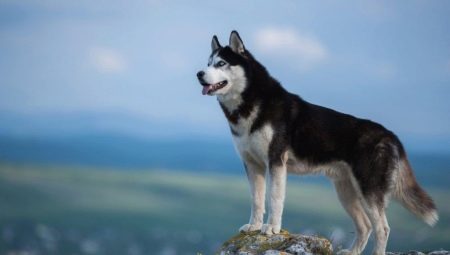
Husky is one of the most popular breeds of dogs, and many fell in love with her for her cheerful, friendly character, lack of aggression, love for people, especially children. In this article, we will consider this breed in more detail: its pros and cons, appearance, character and required care.
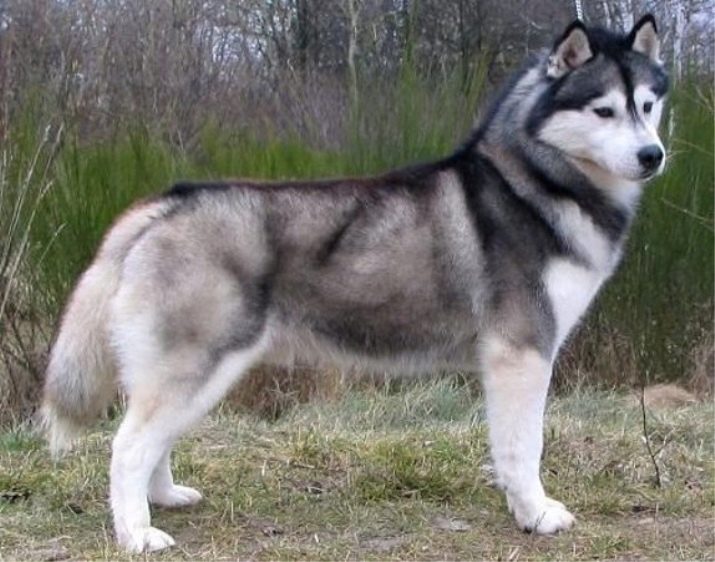
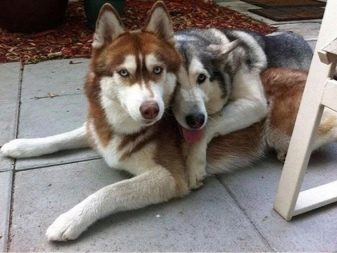
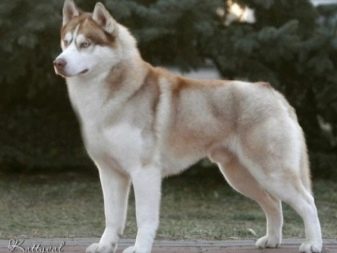
Origin story
Husky dogs were originally named Eski, from the word "Eskimo". This breed was bred by the Chukchi of the northeastern part of Siberia, who needed dogs that could easily endure all the hardships of harsh climatic conditions and run in a team of at least nine individuals. Thus, the Chukchi were transported from places of food extraction to their camps.
At the beginning of the 20th century, the husky was registered in the United States as a riding dog. Mushers of Alaska bought these dogs to participate in sled races.The famous Leonard Seppala - one of the people who stood at the beginning of the breeding of a new breed of husky, won the races several times in a row, thanks to the legendary dog named Togo.
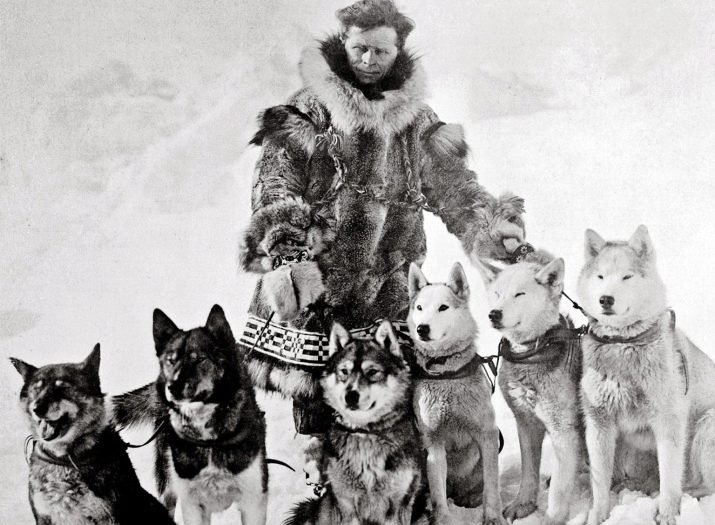
The main popularity of this dog and its owner was due to the fact that they delivered serum from the diphtheria epidemic to a small town in Alaska, torn from civilization by many kilometers of snowy wasteland and a blizzard. Since it was impossible to carry out delivery by any other means, Leonard and his faithful assistant Togo, were one of 20 participants in this relay and led the team for 1085 kilometers.
Togo was distinguished by the fact that he knew how to anticipate dangers on the way, choose the right direction in the dark, encouraged and forced other dogs to climb, which were exhausted after running many kilometers without rest. When traveling, in order to save time and shorten the distance, they had to walk eighty kilometers on the rather thin ice of Norton Bay.
Every now and then one could hear the crackling of ice under the sledges and dogs. The danger was perceptibly brewing to fall into the water or to come off on an ice floe, which could be carried out to sea. And so it happened, the ice cracked and they spent several hours drifting on an ice floe in the open sea, and when they were nailed to a whole glacier, they got over from it, but the team rolled into the water. Togo again showed his courage: he caught on the harness and dragged until the other dogs had the opportunity to get over the thick ice.
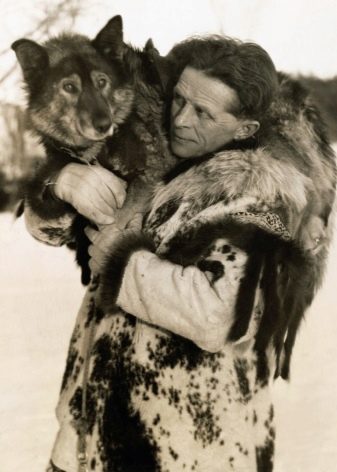
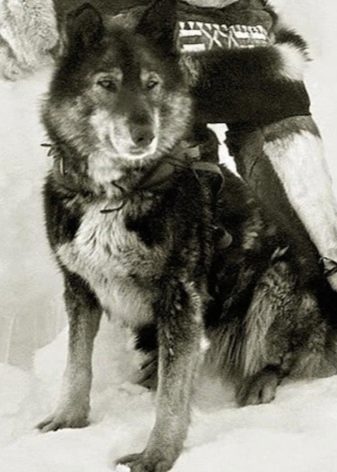
When the destination was 125 kilometers away, the dogs were exhausted and fell. This relay was continued by a new team led by Gunnar Kaasen. The leader of the dogs was Balto, who found the right direction in the blizzard. It was they who delivered the life-saving medicine to a town called Nome. The epidemic passed five days after that.
In gratitude to this feat, Togo and Balto erected monuments; today they welcome guests at the entrance to the Cleveland Zoo. And in the museum of the city of Wasilla in Alaska, the embalmed body of Togo's dog is still kept. In honor of the events of those days, sled races are held annually in Alaska. Further, Siberian huskies were crossed with Alaska aboriginal sled dogs, which are the most ancient breed. Thus, the mestizos were brought out. Today the Siberian Husky is used not only as a riding dog, but also as an exhibition dog. Many people just buy them as a great companion for the whole family.
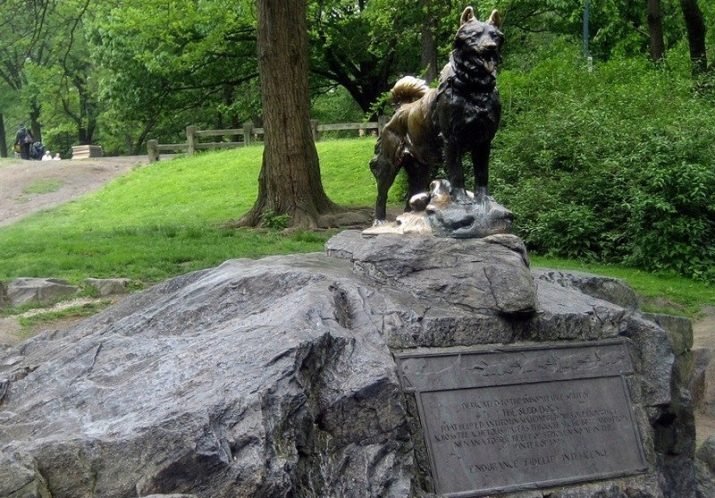
Sled dogs are generally divided into three varieties.
- Workers. The most hardy dogs with a well-developed intellect and a light, unpretentious character. Such dogs are created as assistants for transporting various goods, mail over long distances, to remote places of the Far North. Outwardly, they differ from other subspecies in more developed muscles and powerful paws.
- Hounds. Designed for sledding competition. It is believed that this subspecies is not amenable to training, but still, with proper education, good results can be achieved. The external difference lies in the shorter and thicker coat.
- Exhibition. They are used to participate in show programs and exhibition events. They are considered the best view for keeping in an apartment. In turn, "show dogs" are divided into two subspecies: American and European. Americans are more stocky than Europeans. The dog, created for exhibitions, differs from its fellow tribesmen in a shorter muzzle. That is why such dogs are not suitable for sledding, as they quickly catch colds in the cold, unlike relatives with an elongated muzzle.
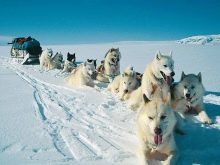
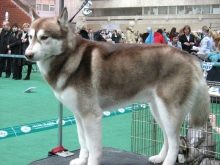
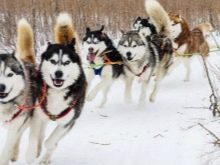
The cost of puppies also varies by class. There are three such subspecies.
- Pet class. Puppies with the lowest cost, because they are not suitable for participation in exhibitions. Such dogs have deviations from the standards of appearance, and they do not have a pedigree. The approximate price is from 20 thousand rubles.The older the puppy, the lower its cost will be.
- Breed class... This includes dogs that meet all the standards of the breed's exterior, have a pedigree. In Russia, a puppy belongs to this class if its parents had the title of "Champions of Russia". The cost of such puppies will start at 30 thousand rubles.
- Show class. Here the price will start from 50 thousand rubles. Dogs of this class have a full set of all standard characteristics in appearance, as well as high achievements of their parents. The pedigree is flawless. Such puppies begin to be sold at the age of six months, so you can guarantee that there are no deviations from the norm for the breed.

Depending on the place of purchase, the price for the same class may be different. In big cities, the price will be higher. Cheaper can be bought from Ukrainian or Belarusian breeders. Buying a puppy directly from the club will be the most expensive, but there will be no doubt that the puppy meets all standards, has a good pedigree, and is properly vaccinated on time.
When buying from hands, be very careful, because if you do not have experience and knowledge, you can easily be deceived and obviously overpay for a low-quality puppy that you buy for the purpose of an exhibition or breeding.
There were cases when an unscrupulous breeder presented buyers with false documents and awards. Sometimes, if the seller realizes that the buyer does not understand this well, he passes off the dog's insignificant achievements as very high, which explains the high cost of the dog. Please inquire, read seller reviews before buying.
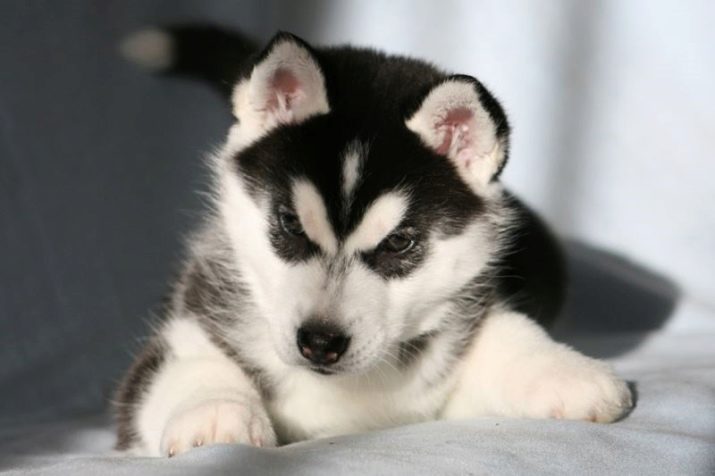
Often the price includes the cost of vaccinations, feed, maintenance. This is quite normal and understandable. If you acquire animals for the purpose of opening a nursery and breeding, then choose already adult, unleashed dogs that have brought the first offspring of excellent quality. The price, of course, will be much higher, because the rule here is that the more rewards, the more expensive. Here the price will start from 300 thousand rubles.
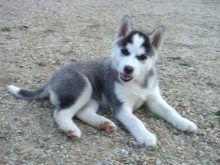
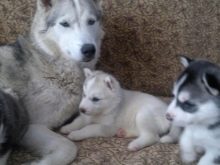
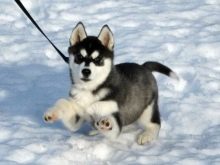
Description
These are dogs of medium height, they are quite compact. The length of the body is slightly greater than the height of the animal at the withers. The coat is thick, with a good undercoat. The ears are straight, the tail looks like a feather, it is also called a fox. With the right food, obesity is not threatened. Males differ from females in a more impressive skeleton. Females have graceful shapes.

Head
The skull is in the correct proportions. The length and width of the muzzle are small, the muzzle tapers towards the nose. An overly massive or, conversely, refined head is a reason for disqualification. Nose color - from black to flesh, it all depends on the color of the dog's coat.
The eyes are almond-shaped, slightly oblique and moderately wide. The color ranges from blue to brown. The phenomenon of differences in the color of the irises is often encountered. The favorites of many are representatives with blue eyes.
Close or, conversely, far-set eyes are considered a disadvantage.
Ears are erect and high without tilting.
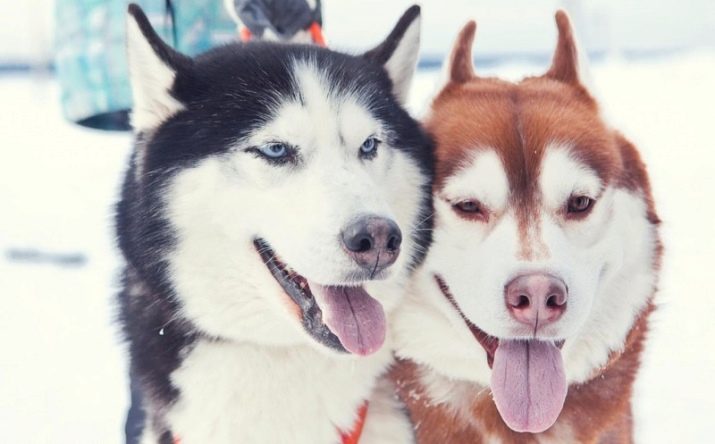
Neck and chest
The neck is slightly curved and of medium length. When the dog is in a standing position, the neck is raised, and if the animal is running, the neck is extended and the head is protruded forward. Any deviation from the standard size in one direction or another will be a marriage. The chest looks powerful, but it is not very broad-boned. An overly wide or barrel-shaped sternum becomes a disadvantage.
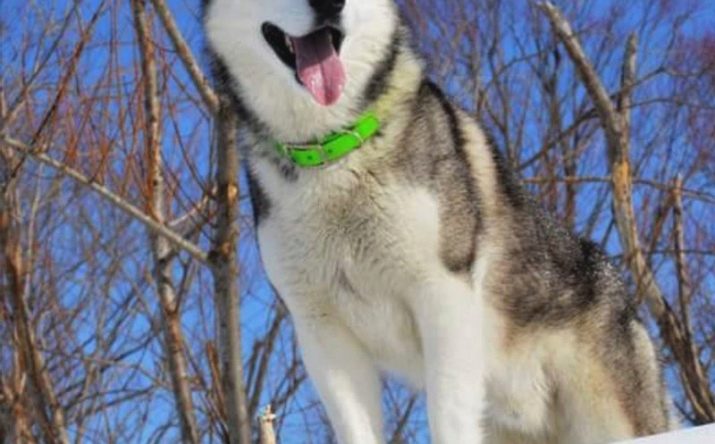
Frame
When the shoulders are perpendicular, it means a flaw. And by standards, it is believed that the shoulder should be obliquely located in relation to the ground, at an angle of 45 degrees. The back of this breed is strong and straight, of medium length. The lower back should also be narrow and elastic.
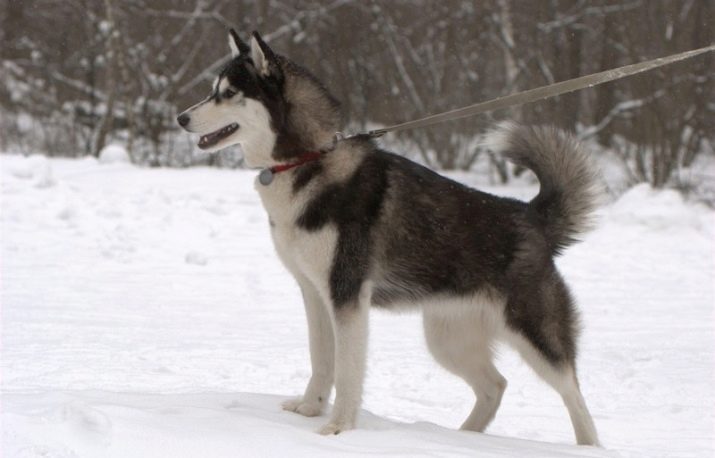
Limbs
The front legs are not wide or narrow apart, they are straight and parallel. There are elbow joints close to the body, the length from elbow to shoulder is less than from elbow to fingertips. Too widely spaced forelimbs will be considered a disadvantage.
The hind legs have powerful thighs, the joint is well defined. The limbs should also be straight and in proper proportion to each other. When driving, they should not turn in either direction. If this happens, then this phenomenon is considered a marriage.
The paws themselves are medium in size, have an oval shape, are well adapted to the snow, fluffy between the toes. The front feet have dewclaws, which are needed for itching.
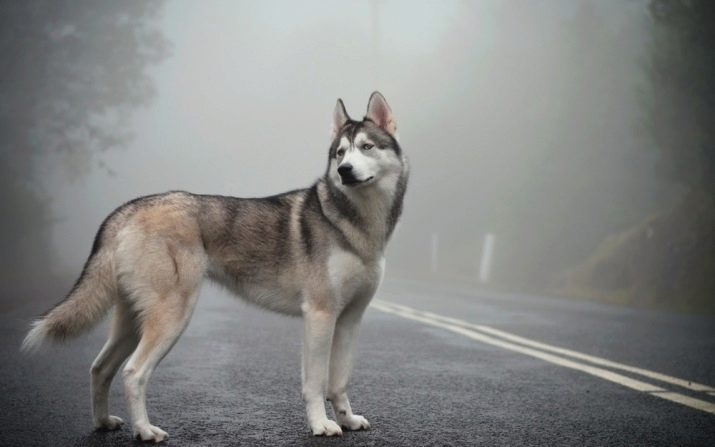
Tail
The hair on the tail is of medium length, proportionally distributed, the tail resembles a fox. In a state of tension, it is raised up and bent in the form of a sickle; in a state of rest, the straight tail is lowered down. If the tail goes to the side, is too fluffy or too tightly curled into a ring, then this is a marriage.
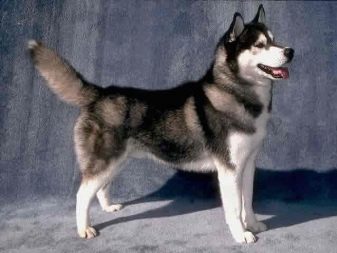
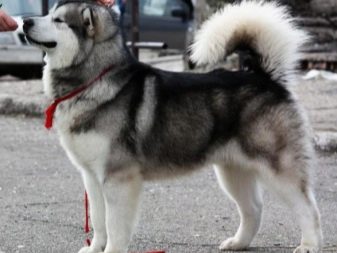
Color
Puppies of different colors are allowed: from black to whitish with various markings in the form of spots of a different color. Whites, red, chocolate or blacks without blotches are very rare, but not a rejection. The so-called mask on the face and two vertical mini-stripes on the forehead are welcome. In fact, there are quite a few color varieties.
- Pure white - This is perhaps the rarest type of color. The undercoat is also white. In a snowy landscape, such a dog is very difficult to spot.
- Gray white wool is the most common. The undercoat is fawn or cream.
- Chocolate or copper the color has a rich shade and depth.
- Ginger the color differs from the previous one in that it is more faded.
- Silvery white the standard color assumes an exceptionally cool undercoat.
- Pastel shades prevail in the color of dogs of fawn and cream color.
- Sable coat is very rare.... She gives off copper, pale yellow and yellow shades, and at the ends of her hair the color turns to gray.
- Wolf gray... Dogs with this color are quite difficult to distinguish from a real wolf. Warm gray tones with splashes of yellowness prevail.
- Agouti. This color is present mainly in representatives of working and racing breeds. The palette is gray-black, reddish on the limbs is allowed. The tail is black at the end.
- Marbled color resembles the Dalmatians. There are quite a few black or dark gray spots all over the body.
- Piebald suit... Mainly white predominates, but one third of the body is marked by the standard with black spots of a round shape.
- Splash coat - this is the predominance of white, on the back there must be a large dark spot, passing to the sides.
- Isabella color - this is the rarest specimen. Assumes the presence of a beige or red undercoat in a snow-white coat.
- Black color wool in Siberians is rare. Several white spots on the muzzle are allowed here.
- Classical can be considered a black and white suit. The colors are distributed in equal proportions. The undercoat is white or black.
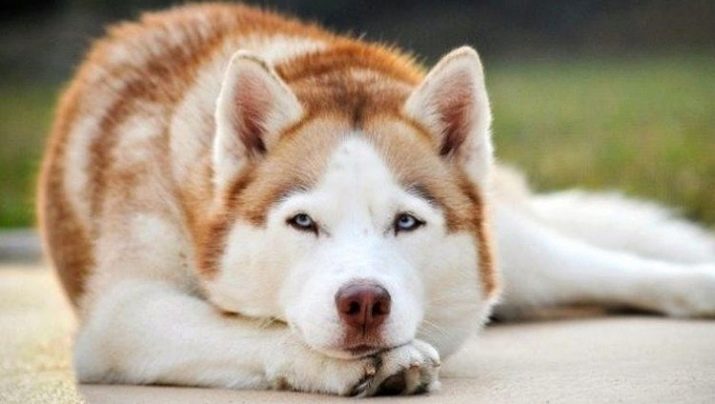
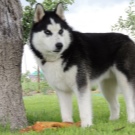

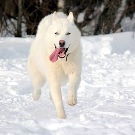
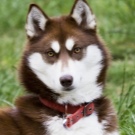
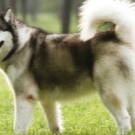
Wool
Does not differ in excess length, but very dense, with a soft undercoat. The dog can safely sleep in the snow in severe frost and not freeze.
Excessively long hair or its inadequacy in terms of hardness and softness is a rejection.
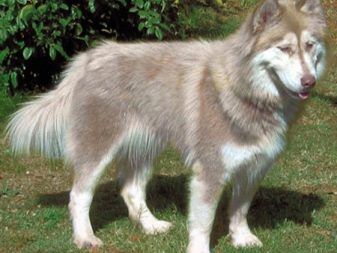
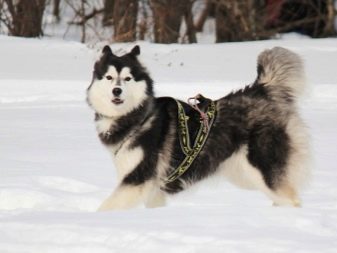
Dimensions and weight
The male reaches a height of 53.5 to 60 centimeters. The bitch grows from 50.5 to 56 centimeters. Weight depends on the size, but, as a rule, a dog does not exceed 28, and a bitch - 23 kilograms. The disadvantage is considered too high, low, outside the standard of the individual. They are disqualified and not allowed to breed from the club.
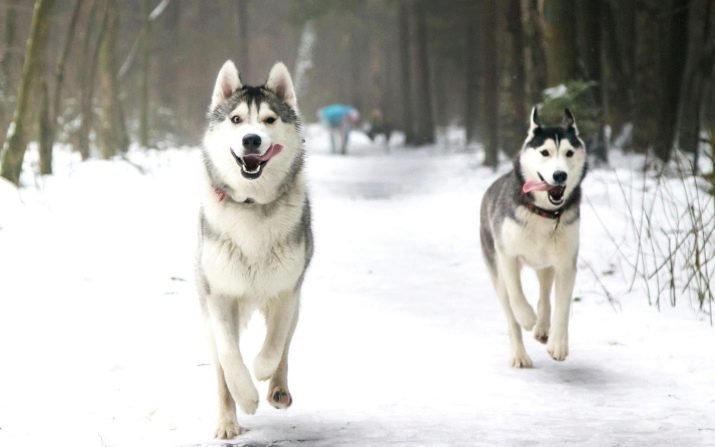
Character
The Siberian Husky is a friendly pet. Calm about strangers, not adapted to hunting, you should not expect prey from him. In the form of a watchdog and guard dog, it is also not suitable, because he completely lacks aggression towards a person. Also, the husky is not suitable for the role of a service dog, since it is not always amenable to training. If you try to make a dog aggressive towards a person, then this will contribute to a violation of the psyche.
Huskies are great as a child's best friend.... This is a very cute animal, kind to the child. Will never bite. True, children under twelve years old will find it difficult with him, since huskies tend to dominate. This is a fairly independent breed of dog that loves to make extraordinary decisions, and routine training is unlikely to bring any results.
Such a dog is smart, his mental abilities almost do not need additional training, but nevertheless, it is recommended to play and practice often with the pet. In addition, this dog is intended for prolonged physical activity and long walks in new places, and the owner should take this into account before adopting the animal. On a husky day, you need to run at least ten kilometers on a long leash.



This breed of dog perfect for lovers of cycling, roller skating, avid runners. Moreover, it will be better if you walk with the dog not in a straight area, but with ups and downs. It is often recommended to take your pet to a specially equipped obstacle course. It is better not to let off the leash.
This breed is definitely not suitable for inactive people. The disadvantage of keeping is that these dogs tend to run away.
If you do not walk enough with them, do not give the required amount of load per day, then the shoots will be frequent... They quickly learn to open doors, they are able to climb even over a high fence, they can knock out glass with their muzzle. In addition, they are excellent diggers and can easily dig a hole.
A chain-link mesh for enclosure fencing is also not suitable. Huskies gnaw through it with ease, and can also injure their paws on the sharp ends of the wire. Take care of the canopy so that the hot sun bothers your pet as little as possible... Choose a shady place to build. Still, these dogs are accustomed to the cold, and they feel great even in very severe frosts.
Do not be surprised if in winter, in a cold cold, your pet sleeps peacefully in the snow. This does not mean that something is wrong with him - the animal only follows instincts.
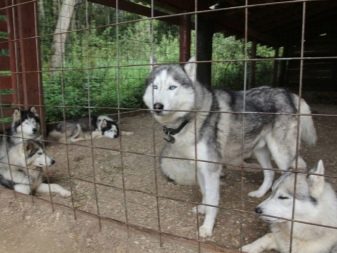
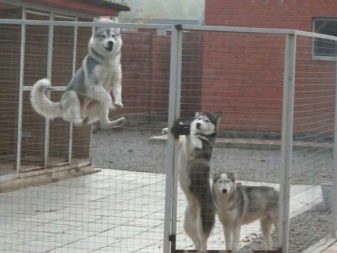
Huskies are talkative. You rarely hear their barking, but this dog makes guttural sounds often, thus expressing its delight. Likes to sing to music. Her howl can be long and drawn-out. Many breeders are wary of howling, believing the prejudice that this behavior is causing trouble.
However, a reason has been identified why huskies prefer to howl instead of barking. It is assumed that during long races to communicate with each other and the owner, so as not to waste extra energy on barking, Huskies prefer to howl, which is less energy-intensive.

Life span
With good care, Siberian huskies can live 12 to 14 years. But there were cases when representatives of this breed lived to be 20-25 years old. If you regularly and correctly give the dog a load, taking into account all its features, then the dog may well become a long-liver.
Huskies have good, stable immunity, rarely get sick. Of course, provided that all the necessary vaccinations are made on time. Of the diseases, several can be distinguished to which this breed is genetically susceptible.
Eye diseases:
- cataract can develop at the age of six years, if treatment is not started on time, then this can lead to loss of vision;
- retinal atrophy - this disease is inherited, and when choosing a puppy, you should pay attention to the diseases of the parents;
- entropion (turn of the century) - this disease develops as a result of inflammation of the conjunctiva.
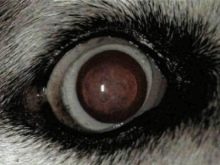

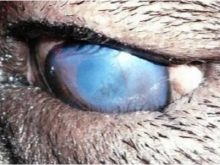
In dogs with light or different irises of the eyes, you can observe:
- testicular cancer;
- hypertension;
- dermatitis;
- food allergies;
- paralysis.
Be attentive to your pet and watch for the slightest changes in mood and well-being. A timely visit to a veterinary clinic will help to avoid serious health problems.
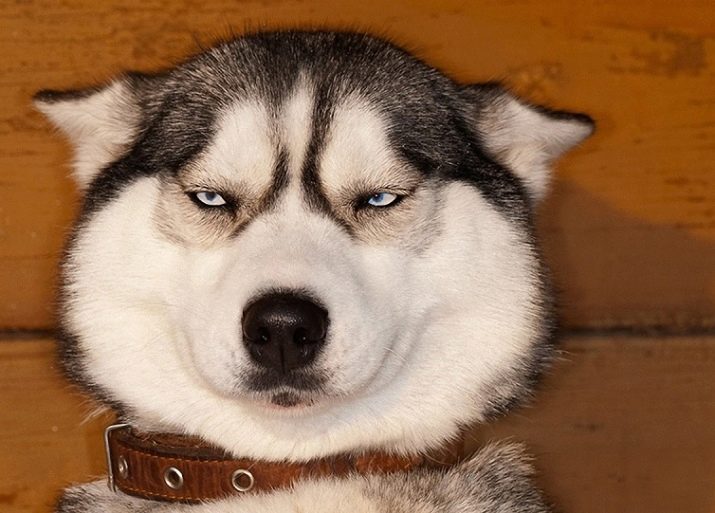
Care
This breed is unpretentious, easily settles in a new place and is quite suitable for keeping in an apartment. But still, the best conditions for a dog will be country houses, not apartments. Huskies cannot stand loneliness, and if the conditions of detention permit, it is best to have several animals at once. If your pet lives in an apartment, and at the same time is mostly alone, then when you return, do not be surprised if half of the items will be "eaten".
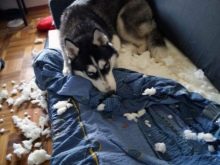
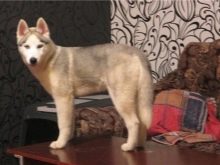
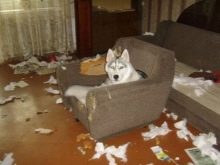
Taking care of your husky at home is very simple. This dog breed is very clean.... Leather and wool are odorless, you need to bathe no more than 1-2 times a year, with the exception of white colors. In winter, these dogs are very fond of lying in the snow, and therefore their coat is well cleaned. Do not slobber, during moulting, which naturally occurs twice a year, the thick undercoat must be combed out.
In addition, after each walk, it is necessary to inspect the paws for damage. If any, lubricate with Panthenol. You need to trim the nails every two weeks, for this they use special nippers. Also pay attention to the ears, it is best to clean them every week, shallow.

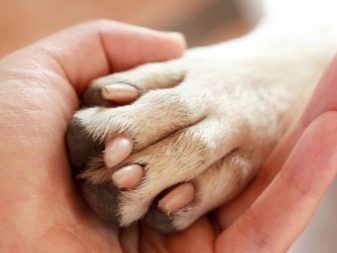
The teeth are cleaned every day, with the help of special tools. These dogs are taught from childhood to this procedure. Or you can buy special toys and bones for self-cleaning tartar.
Do not forget to remove secretions, mucus and dust from the eyes with a cotton swab, and deworm the animal in time.
That, in fact, is the whole care.
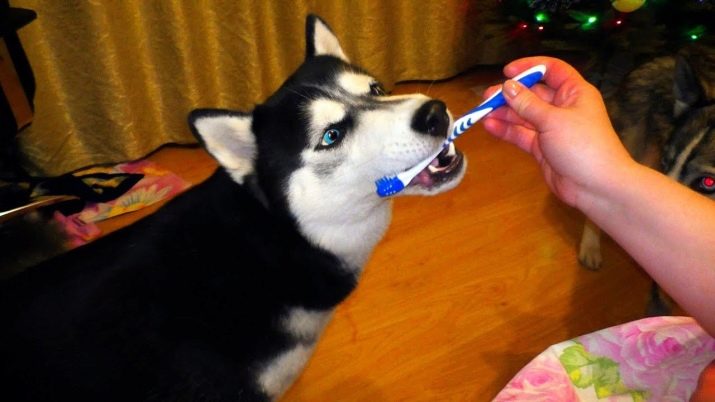
When choosing a puppy, it is recommended to contact only to specialized nurseries or directly to the breeder. So you will protect yourself from buying a baby, who may subsequently have health problems due to improper maintenance or feeding. A professional breeder or nursery will present you with all the necessary documents: from pedigree to veterinary book with a note of all vaccinations.
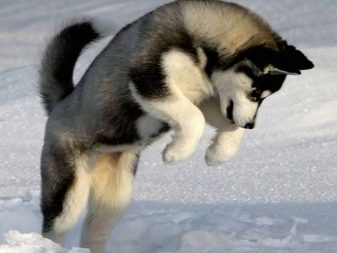
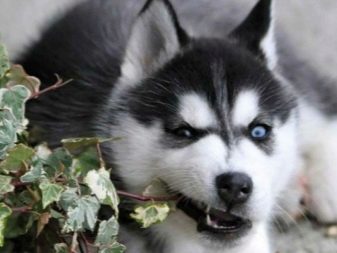
Upbringing
Husky training can be started from the age of three months. The dog will only give in to the commands of the person whom it has chosen as the leader. If the animal does not perform the actions that you want from her, then this means that he is bored. It understands you, but does not want to do it, it is not interested in it.
The best way to train your pet is through play. Get your puppy interested and you will see how quickly he learns to do what you want him to do.
During commands, your voice should sound calm, clear and confident. Rudeness and shouting in the upbringing of Siberian huskies will lead nowhere. Some owners note that their pet happily obeys the request, but does not react to the commanding tone. In any case, try these two methods, and you yourself will understand which approach works best for your dog. Back up your praise with a tasty treat.
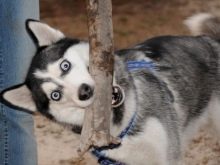
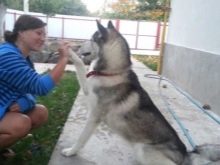
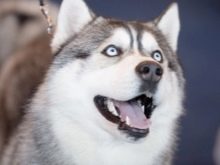
Punishment for a dog can be the manifestation of its power over it.
If the pet is guilty, press it to the ground, taking it by the withers, and do not let it go until the animal stops pulling away. So you will show who is in charge here. Husky hitting is unacceptable. With rewards, it's simple: praise your dog for every right action. The tone of voice should be different from the tone of the team.
Since the dog perceives your whole family as a pack, it needs to understand who is the leader in this pack. Behave like an authority not only with your pet, but also with all the household, so that the dog has no doubts about this. When you teach a puppy to the command "place", and he still does not obey and turns under his feet, then the best way would be to ignore. When the dog realizes that no one is interested here now, he will leave himself. It always works flawlessly.
The main thing is, do not forbid the husky to communicate with other dogs, do not strain him with too long and tedious study of the same command, be respectful in your behavior with this breed, do not hit or swing, do not yell at the dog. Get regular, fairly heavy physical activity at any time of the year. This is one of the main rules for these dogs.
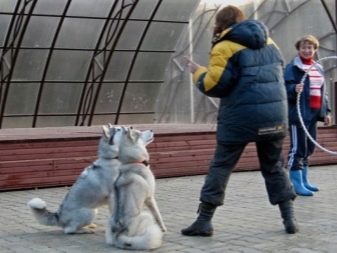
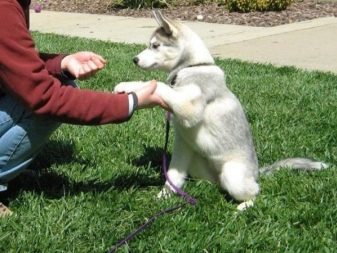
What to feed?
Puppies up to two months old need to be fed six times a day. From two to four months - four times. As the puppy grows, it is worth reducing the number of meals to one or two times. The portion is selected individually.The animal must eat everything completely.
If you notice that your four-legged friend is getting better, you need to reduce the amount of the serving.
If you are going to feed your pet with natural products, then it is worthwhile to balance the daily diet well. The meat should be 1/2 part and be served raw or scalded in boiling water. Chicken can cause allergies, so be very careful. Turkey is fine, though. Pork and lamb are not recommended; beef and rabbit are preferred.
Porridge made from rice, buckwheat, oatmeal can be used daily, but raw egg yolk should be added there no more than twice a week. You should be careful with cereals, as they are not suitable for everyone. If, after a week of feeding with porridge, the dog begins to smell unpleasant, it means that your pet has a protein-fat metabolism. As a rule, such fat metabolism is characteristic of Siberian huskies, and protein-carbohydrate is typical to a greater extent for European breeds. In such cases, exclude all grains from the diet and feed them with meat products and vegetables.
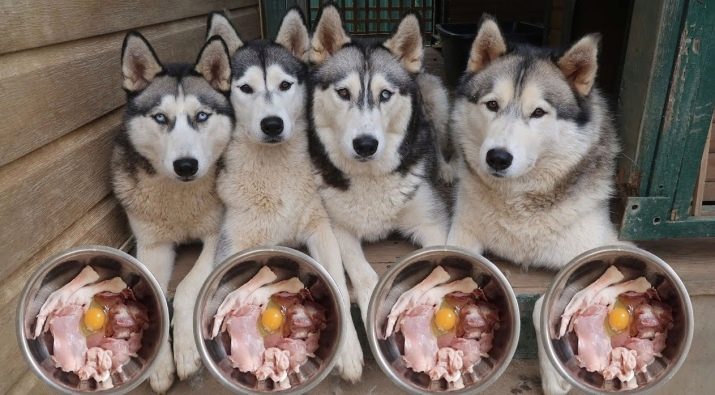
Vegetables can be served raw or steamed. These dogs also love fruits such as pears and apples. Potatoes and legumes are discouraged. The starch contained in them is poorly tolerated by the digestive system of this breed. Greens and vegetable oils are very beneficial for the husky's diet.
You can add them to cereals. In addition, you can season porridge and fish oil. Milk is suitable only for puppies, and adults will love fermented milk products and cheeses. Fish is natural food for huskies, but in order not to acquire parasites, it is better to give it boiled, and remove the bones in advance. And do not forget to additionally regale the dog with vitamins, which will be selected by the veterinarian.
Despite all the taste and benefits of a natural woman, Experts agree that it is best to feed the dogs dry specialty food or canned food. Of course, this is an expensive way of feeding, since only premium food is suitable for huskies. Keep a close eye on the health of the animal, even if you use high quality dry food, so that, if necessary, you can correct the menu in time. If the pet lives on the street, then in winter it is necessary to increase the daily feed rate.
Also, do not forget that in no case should you mix natural products with dry food. Decide on one type of feeding that you stick to for the rest of your dog's life.
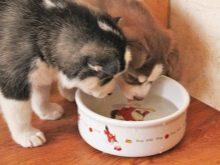

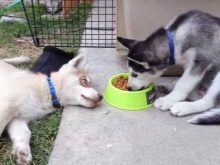
Popular nicknames
Consider the popular names for the Siberian Husky breed. Children's awkward nicknames are not suitable for these beautiful, stately dogs, choose a name that is simple in sound, but rather expressive. Many people prefer to give names that have any meaning, believing that the name will indirectly affect the future fate and character of the pet:
For example, boys are called like this:
- Amur, what devotion means;
- Timati - impulsivity;
- Amethyst - inflexibility;
- Jack - equilibrium;
- Quint - constancy;
- Dick - leadership;
- Buran - ardor, activity;
- Rivers - obedience.

Dogs are often given names based on the homeland of the husky, for example:
- Siberia;
- Polar Star;
- Snowball;
- Snowball;
- Buran;
- North;
- Wind;
- Iceberg;
- North;
- Snow.
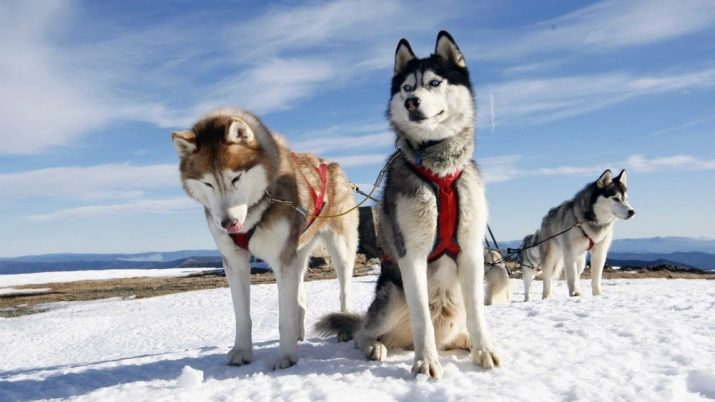
The most popular nicknames include the following:
- Daemon;
- Shaman;
- Wolf;
- Fierce;
- Altai;
- Typhoon;
- Buddha;
- Dusk;
- Barbarian;
- Fog;
- Alpha;
- Tsar.
Dogs are often called names from literary or mythological works: Loki, Caesar, Siegfried, Zeus, Thor, Achilles, Rex, Fuchs, Nero, Thunder. Also, the name can express some character trait inherent in this breed. For example: Fast, Sly, Whirlwind. The characteristic pattern-mask on the face gives a rather evil look, for which the dogs are often given such nicknames as Faust, Damn, Darkness.
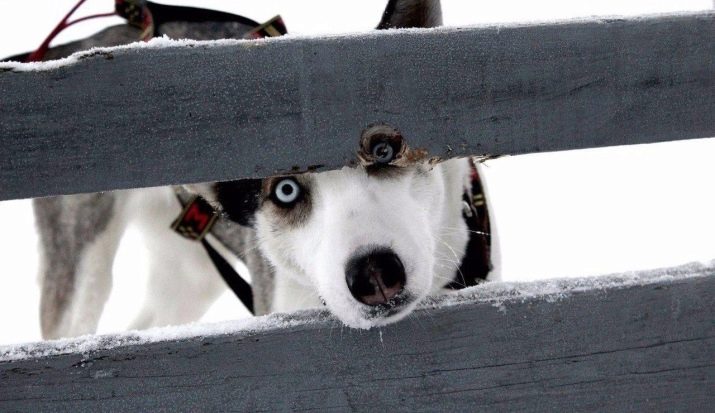
When choosing an estate, many emphasize that letters such as "X" or "P" are present in it - it is believed that this way the puppy gets used to it faster and responds more easily. Here is a list of examples of popular nicknames with the presence of these letters:
- Rover;
- Creek;
- Reef;
- Rogdan;
- Rumbik;
- Raj;
- Renault;
- Rally;
- Radar;
- Ruslan;
- Hort;
- Swag;
- Khorsun;
- Chilo;
- Honda;
- Frowning.
But huskies, in principle, quickly get used to any name.
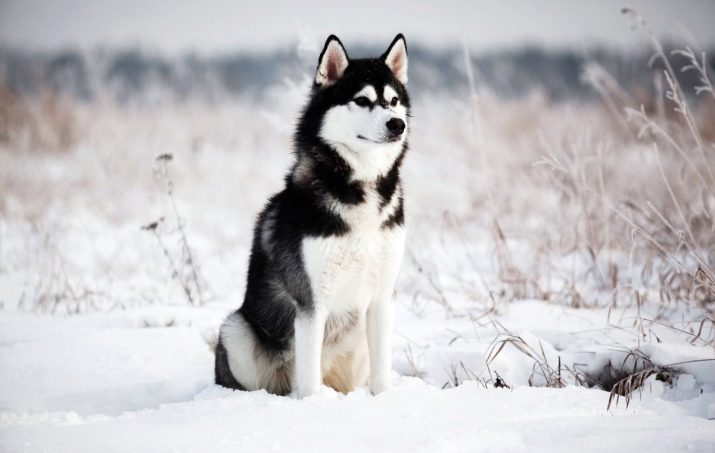
Now let's look at popular nicknames for girls. They can also reflect the climatic conditions of the origin of a given breed, namely:
- Alaska;
- Taiga;
- Night;
- Arctic;
- Winter;
- Snowstorm;
- Fierce;
- Tundra;
- Hilda;
- Severyanka;
- Icicle;
- Blizzard;
- Avalanche.
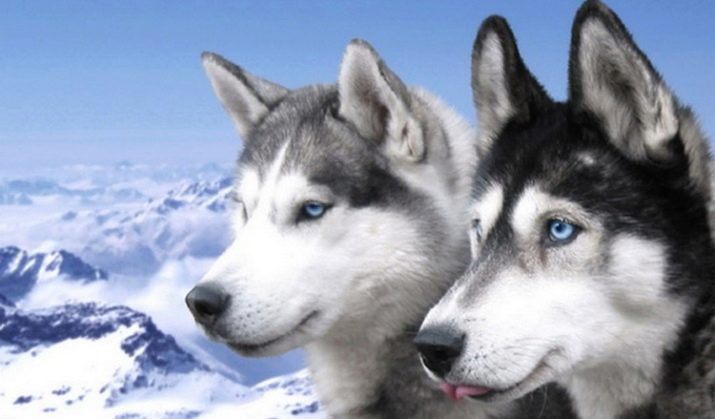
When choosing a name with a meaning, nicknames are suitable for females:
- Vesta - calm;
- Yuna - hardy;
- Naida - reliable;
- Ella - light;
- Bagheera - graceful;
- Akira - clever;
- Tina - good;
- Salma - good-natured;
- Hell - decisive;
- Elsa - obedient;
- Hoshi - starry;
- Ricky - strong;
- Sakura - cherry;
- Assa - dawn.

Also common nicknames are:
- Etna;
- Yara;
- Egri;
- Vesta;
- Bona;
- Erta;
- Ken;
- Java;
- Ugra;
- Ava;
- Ayda;
- Assol;
- Isis;
- Guillemot;
- Mayan;
- Gressy;
- Eileen;
- Aygi;
- Weasel;
- Martha;
- Juno;
- Vey;
- Earley.
If we take literary and mythological works, then we can single out several of the most popular names: Josephine, Greta, Juliet, Gerda, Hera, Indira, Olympia, Patricia.
Choose names for your pets so that they wear them with pride. These dogs feel their nobility, majesty, grace and become, therefore such names as Tuzik and Sharik, of course, will not work, and can even offend, belittling their dignity.
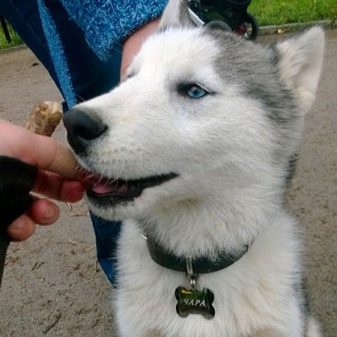

Owner reviews
Having monitored the reviews, it can be noted that most breeders of Siberian Husky dogs are happy with their pets. Basically, such positive traits as friendliness, excellent attitude towards children, kindness, cheerfulness, affection are noted. However, almost every breeder warns against keeping a husky in an apartment... These dogs are very energetic, accustomed to space, they love to live in a pack. Therefore, leaving the dog alone in the apartment, you risk losing its former appearance.
You should start such a dog only if the site of the country house allows you to make a fairly spacious aviary. Also, all breeders confirm that great physical activity for a pet is a vital component.
But as to whether a representative of this breed can be a guard dog, opinions are divided. Someone claims that his four-legged friend is an excellent watchman, while someone, on the contrary, says that they could not teach to guard the house.
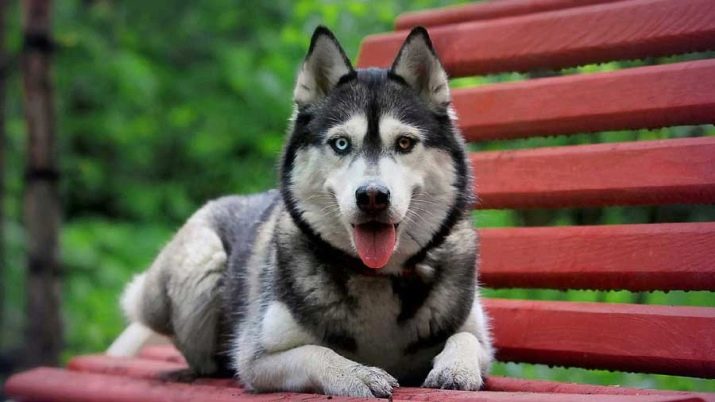
For even more interesting facts about the husky, see the next video.






































